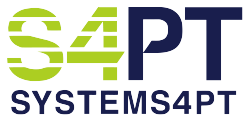Treatment Volume Below the MIPS Threshold? Don’t Celebrate Just Yet
As MIPS is now a reality for outpatient rehab in 2019, many practice owners are focusing on the definition of “eligible participants.”
If an outpatient rehab practice does not satisfy each parameter of Medicare’s low threshold exemption, then that practice can participate in MIPS in 2018, but is not required to do so:
The Medicare Low Threshold
Practices who treated 200 or fewer Medicare Part B patients in 2017
or
Practices who submitted less than or equal to $90,000 in allowed Medicare Part B charges in 2017
We’ve heard from numerous practice owners who are elated to learn, “We were paid less than $90,000 with Medicare in 2018, which means we are not required to participate in MIPS in 2019!”
Perhaps the most jubilant are practices who document on paper. A common mindset is, “People said that unless we use EMR, PQRS would put us out of business. Then they said the same thing about G-codes. Then eval complexity codes. And now, MIPS. Over the years, we’ve avoided the hassles and expense of EMR and, because of our low Medicare treatment volume, once again will be just fine when MIPS begins.”
Both mindsets are short sighted and dangerous.
“Opting out of MIPS” will geometrically increase the risks that your practice faces each year. More specifically,
If you’re not participating in MIPS, healthcare will aggressively discriminate against your practice.
QUALITY
MIPS has several aliases, one of them is “Pay for Progression.” Patient progression (outcomes) represents the majority of the “quality score” in the MIPS calculation. And the “quality score” represents more than half of the overall MIPS score. Patient progression is about to become very high profile as our industry’s leading EMR systems will leverage outcome stats, communicating with payers, doctors, hospitals, and even patients.
One of the many goals of MIPS is to enable healthcare stakeholders and patients alike to make more well-informed decisions as it relates to the quality rankings of the rehab practice they select. Bring yourself up to the 10,000-foot level and note what’s happening: If your practice is not participating in MIPS, then your practice is not included in the list of performance-qualified options used by both referring doctors and patients.
Imagine this scenario: Throughout your career you’ve specialized in one body region, let’s use “shoulder” as an example. Progression with your patients’ shoulder diagnoses is off the charts. You have a steady stream of both students and tenured therapists who stop by to observe your techniques. With MIPS underway, your local referring doctors are deluged with quality stats from other rehab practices. Likewise, patients easily compare average shoulder progression for local practices when making decisions for direct access treatment.
Despite the fact your shoulder outcomes are the best in the region, your practice is not included in these comparisons. Doctors and patients both opt for lower-quality treatment, because your market-leading quality is invisible and unknown.
As healthcare evolves in the world of MIPS, it will quickly leave your practice behind.
CONNECTIVITY
Another major priority with MIPS is interoperability, the ability for healthcare stakeholders to communicate electronically with each other and with patients. In fact, CMS’s recent July 12th announcement increases the emphasis on this topic. Again, observing this from the 10,000-foot level, you can see what’s about to happen.
With interoperability, the “paper storm” subsides as healthcare enjoys a new era of communication. Therapists are reading surgical reports, on demand. Plans of care travel at the speed of light and doctors have access to patient progress, real time. Surgeons, doctors, therapists, everyone is closer, everyone is “aware” of each other’s status. The patient is immersed in this information as well.
But your practice isn’t included. You’re outside of this “new normal.” Yes, you have referral relationships spanning back 15 years, but those doctors’ other stakeholders INSIST upon real-time access to rehab records. Even for the most loyal referral sources, working with your practice rapidly becomes a liability. Remember, all the other healthcare stakeholders are judged by MIPS as well. No interoperability or progression data from your practice would result in a lower MIPS score for the referring doctor, which is why they stop referring patients to you.
THIS ISN’T LIMITED TO JUST MEDICARE
The CMS is openly encouraging (pressuring) the major commercial payers to adopt MIPS protocols, as early as 2020. Better communication. Quantification of quality at all levels. Less paper, less inefficiency. It’s going to happen a lot faster than you expect.
PRACTICES WHO “OPT OUT” ARE ON THE OUTSIDE
With MIPS, no one will tell doctors, surgeons, hospitals, or patients to discriminate against your practice. But without question, they will.
As such, this is one of those times where the practice owner wants to take off their “therapist hat” and put on their “CEO hat.” Your practice is your life’s work. Look ahead 12-24 months. Don’t just imagine the new realities and don’t fight them. ACCEPT the new realities discussed above, and in your mind’s eye, imagine how your practice will fit into the process. Imagine the benefits, when your exceptional outcomes are seen throughout the region. Hospitals and surgeons who never heard of you before will want to work with you easily and seamlessly. And patients, desperately searching for relief, will be delighted when they discover your quality stats.
And as it relates to EMR, we will provide you with the only MIPS-compliant workflow, that is FASTER than your current paper documentation. Look at the System overview video on our website. Ask for a Systems 4PT hands-on EMR trial.
Embrace the future!

